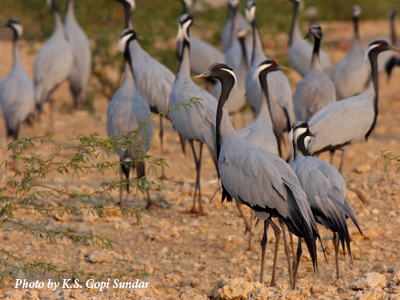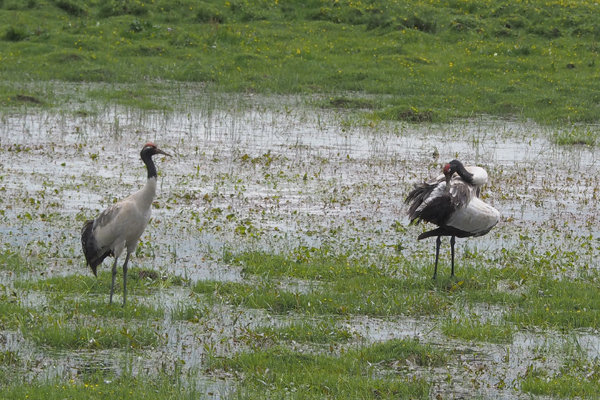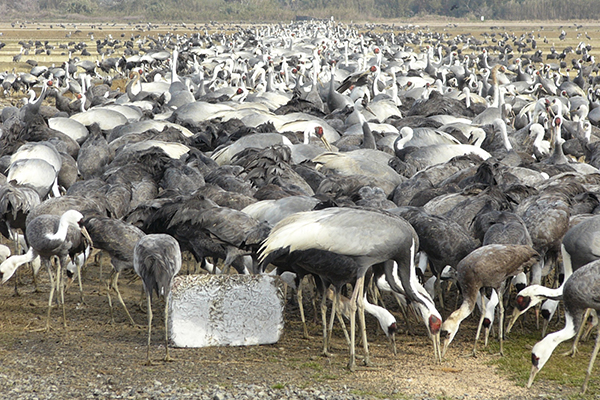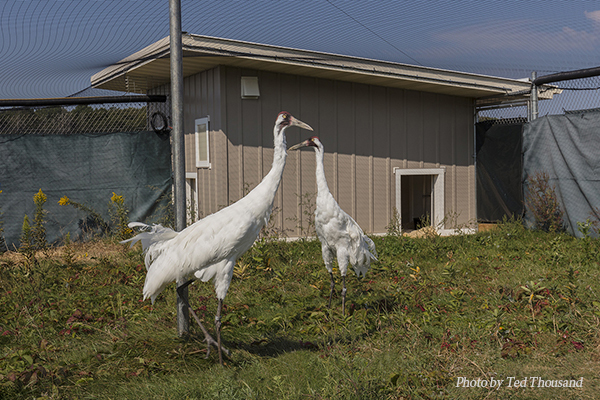
The unprecedented loss of up to 8,000 Eurasian Cranes to an H5N1 highly pathogenic avian influenza virus in Israel’s Hula Valley in December 2021 was a tragic example of the potential for this virus to sicken wild birds and now cranes in particular. It came shortly after the loss of hundreds of Demoiselle Cranes in Rajasthan, India, in November and a tumultuous 2021 where outbreaks of the virus in poultry and wild birds were documented in over 40 countries worldwide. The recent detection of H5N1 in Newfoundland and Labrador Province in Canada in December 2021, and South and North Carolina earlier this month in wild waterfowl (including American widgeon, northern shoveler, and blue-winged teal) is certainly cause for concern. This pathogen has not been identified in North America since 2016.
Avian influenza’s primary impacts have historically been centered in domestic birds. Since the appearance of the high pathogenic H5 type A influenzas in East Asia in 1996, a number of outbreaks in poultry during the 2000s and 2010s have occurred. These led to the culling of millions of domestic chickens, turkeys and other food-producing animals, and economic losses in the billions of US dollars.
Concerns over the health risk to people (and other mammals) has also been an important consideration since avian influenza is considered a potential zoonotic disease, or a disease of animal origin that may affect humans. Thankfully, cases in people have cropped up only sporadically. They have occurred under unique close contact situations with infected birds, with no evidence of sustained disease transmission.
A growing number of outbreaks and virus strains have since been described in wild birds worldwide, associated with variations, or reassortments, of the virus’ genetic material and various new designations. The first significant losses in wild birds occurred at Qinghai Lake in central China in 2005, involving over 6,000 wild birds, including many bar-headed geese, to an H5N1 strain. Only a pair of Black-necked Cranes were found among the dead birds, and it seemed the disease was mostly limited to waterfowl, the species that naturally harbor these viruses. Subsequent research, however, showed the new H5N1 variant was more lethal to wild birds, and its transmission was sustained between migratory waterfowl, suggesting the virus could be carried along migratory routes.

For years, the International Crane Foundation has expressed concern for a variety of disease risks in areas where cranes were increasingly concentrated due to agricultural development and loss or fragmentation of habitat, and direct feeding of cranes for ecotourism development or to prevent crop depredation. Nowhere has this been clearer than on the southern Japanese island of Kiyushu, at Izumi, where now 16,000 Hooded Cranes and 3,000 White-naped Cranes overwinter, both sizable shares of their global populations. Sure enough, high pathogenic H5 viruses affected poultry stocks in the region and eventually spilled over into the overwintering cranes in 2010 (H5N1), 2014 (H5N8), 2016 (H5N6) and 2020 (H5N8). Fortunately, losses of cranes were limited to fewer than a hundred in each outbreak, though the effects on nearby domestic poultry stocks were significant. The situation at Izumi continues to highlight the importance of preserving or restoring natural wetland habitats and attracting wintering cranes to multiple, scattered sites and the increasing separation of wild birds and domestic poultry to protect them both.

Unfortunately, the situation in the Hula Valley region of Israel seems a mirror image to Izumi. Tens of thousands of Eurasian Cranes overwinter there due to artificial feeding for tourism while also preventing crop depredation by the cranes in nearby agricultural fields that were developed following drainage of large wetlands in the mid-to-late 20th century. Many of these cranes no longer migrate further to Africa.
Highly pathogenic H5N1 virus affected poultry farms in Israel beginning in October and mid-November 2021, an entire month before large numbers of cranes became ill at the Agamon Hula site. It seems likely that the virus recirculated between wild and domestic birds and was dispersed around the country by various means, both among wild birds and animal agriculture trade and other activities, reflecting poor biosecurity. The outbreak resulted in the loss of the Eurasian cranes, but only a limited number of great white pelicans, Eurasian kestrels, and common buzzards. Over 1 million domestic chickens and turkeys were lost or slaughtered to control the outbreak among 20 farms.
As of a week ago, the Israel Ministry of Agriculture announced control of the outbreak. A committee has been formed by Israel’s National Emergency Management Authority to develop recommendations for the preparation of future avian influenza outbreaks, which have occurred regularly in the country for years, as well as examine potential changes to the management of the Agamon Hula site to decrease risks of disease in cranes and other birds. Current efforts are focused on site clean-up, disinfection and monitoring. This is not unlike what has happened at Izumi and elsewhere in East Asia in hopes of preventing large losses of cranes and other birds from this disease.

Closer to home, the Conservation Medicine Department, together with ICF leadership, has developed and implemented a biosecurity policy and set of procedures to keep the captive flock at the Cranes of the World site safe since 2005. We activated our plan and heightened our biosecurity measures in 2015 when H5N1 appeared in Wisconsin within 30 miles of ICF headquarters in Baraboo. We hope we are not put in that position again in 2022 but will keep monitoring the situation closely.
 Story submitted by Barry Hartup, DVM, MS, Ph.D., Director of Conservation Medicine.
Story submitted by Barry Hartup, DVM, MS, Ph.D., Director of Conservation Medicine.
